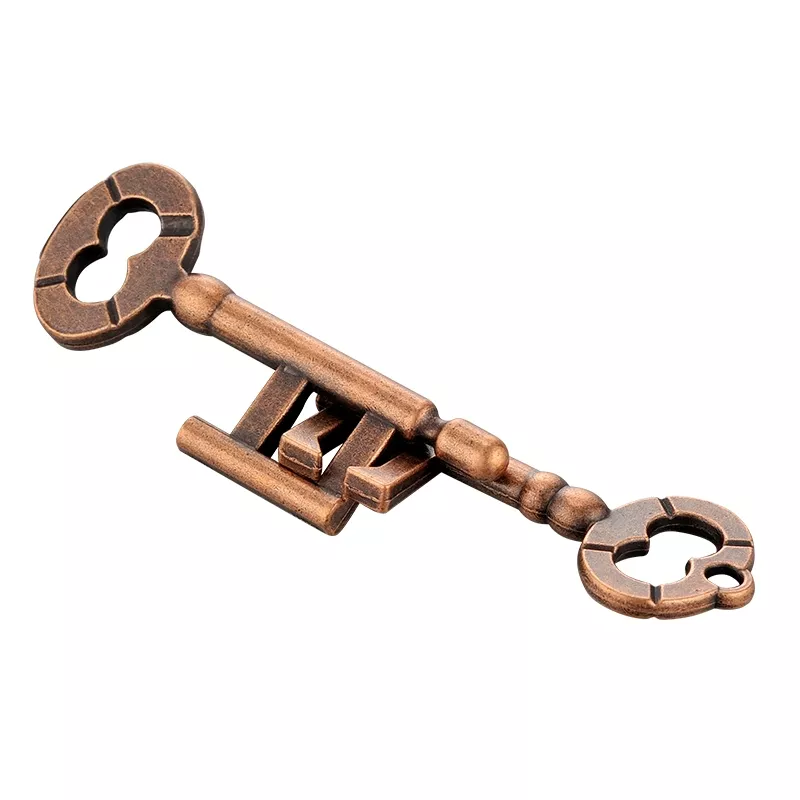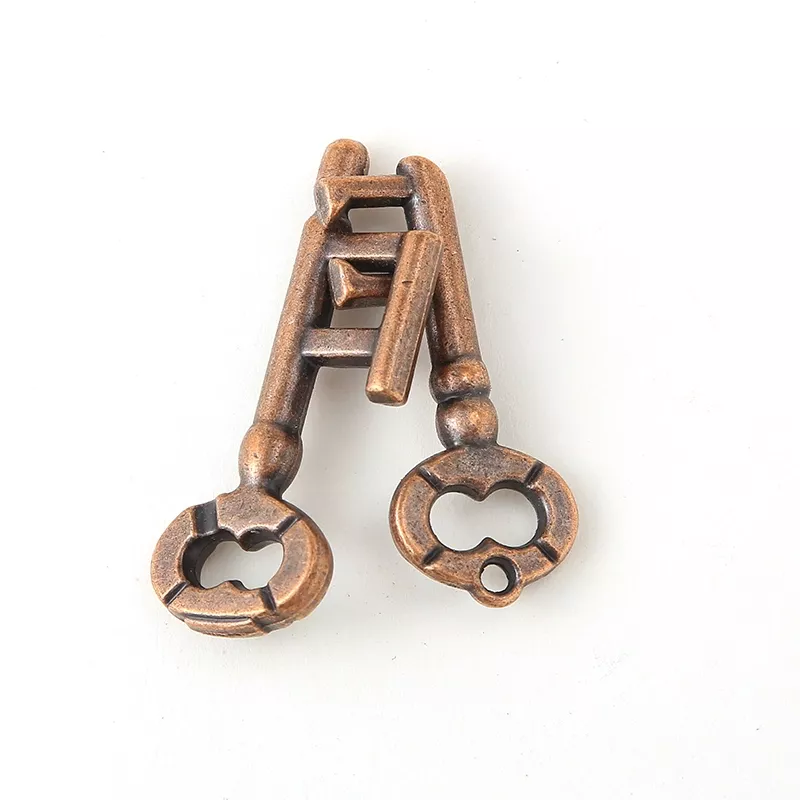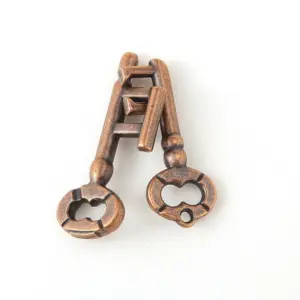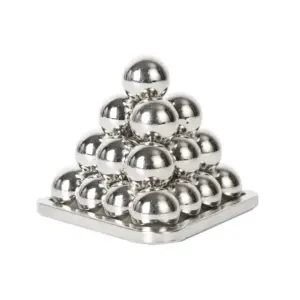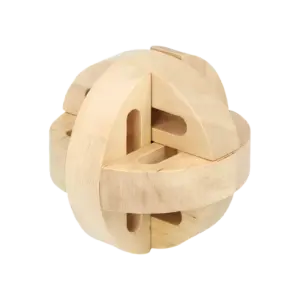A Comprehensive Guide to the Two Key Lock Puzzle: Solving and Reassembling This Ancient Brain Teaser
The Two Key Lock Puzzle, also known as the Inseparable Key Puzzle, is a fascinating ancient brain teaser that has captivated puzzle enthusiasts for generations. Originating as a classic disentanglement puzzle, it typically consists of two intricately designed keys interlocked in a way that appears impossible to separate without force. However, with careful manipulation and spatial reasoning, the keys can be separated and reassembled, offering a rewarding challenge that tests logic, patience, and problem-solving skills. This guide will walk you through the process of separating and reassembling the puzzle, providing detailed steps and insights into its historical and cognitive benefits.
Understanding the Two Key Lock Puzzle
The Two Key Lock Puzzle is a type of mechanical brain teaser, often made from metal or plastic, featuring two keys with unique shapes and notches. At first glance, the keys seem permanently linked, with small indentations and notches that prevent easy separation. This puzzle, rooted in 19th-century puzzle crazes, is not just a test of physical dexterity but also a mental exercise that enhances spatial awareness and logical thinking. It is commonly used in educational settings to develop patience and problem-solving abilities, making it a popular choice for both children and adults.
Two Key Lock Puzzle
Unlock the Puzzle: Ancient Two Key Lock Brain Teaser
Challenge Your Mind with the Two Key Lock Puzzle Brain Teaser
- Ancient Origins: Inspired by ancient puzzles, this brain teaser tests your spatial reasoning and problem-solving skills.
- Simple Yet Complex: Two specially designed two keys interlock in a seemingly simple yet deceptively complex puzzle.
- Develop Your Brain: Enhance your logical thinking, patience, and adaptability with this engaging challenge.
1000 in stock
The puzzle’s design is deceptively simple, yet it hides a clever mechanism that requires specific movements to unlock. One key typically has three indentations, which are crucial for the separation process, guiding the solver through a series of rotations, slides, and shifts. This complexity ensures that brute force is ineffective, emphasizing the need for careful, thoughtful manipulation.
Reassembling the Two Key Lock Puzzle: Reversing the Process
Once separated, reassembling the Two Key Lock Puzzle involves reversing the separation steps, which can be equally challenging. Here’s how to do it:




- Positioning for Reassembly
- Start with both keys separated. Hold Key B stationary with its handle facing you, as before.
- Take Key A and position it near the handle of Key B, preparing to engage it.
- Reverse Figure-Eight Motion
- Begin by tracing a figure-eight path with Key A around Key B’s handle, but in the reverse direction from how you separated them. This means undoing the looping motion, ensuring Key A starts to re-engage with Key B.
- This step is crucial to begin locking the keys together, and you should feel resistance as Key A starts to fit back into place.
- Shifting Back to the Right
- After completing the reverse figure-eight, shift Key A back to the right. This reverses the leftward shift during separation, aligning Key A with the middle indentation on Key B.
- Ensure the alignment is precise, as misalignment can make the next steps difficult.
- Sliding Back Through the Middle Indentation
- Slide Key A back through the middle indentation on Key B, moving in the opposite direction from the separation slide. This step should feel smooth if the previous alignments were correct, re-engaging Key A further with Key B.
- Rotating Back by Half a Turn
- Rotate Key A back by half a turn (180 degrees) to return it to its original orientation. This reverses the rotation during separation, ensuring Key A is positioned correctly for the final step.
- The rotation should align Key A with the first notch on Key B, preparing for re-locking.
- Moving Through the First Notch
- Finally, move Key A from left to right, passing back through the first notch on Key B. This locks Key A in place, completing the reassembly process and returning the puzzle to its initial interlocked state.
This reassembly process requires careful attention to detail, as each step must be executed in reverse to ensure the keys lock together seamlessly. The figure-eight motion, again, is a critical and unexpected detail, emphasizing the puzzle’s reliance on spatial visualization.
Historical and Cognitive Benefits
The Two Key Lock Puzzle has roots in 19th-century puzzle crazes, with similar designs patented as early as 1892, as seen in products like the Hanayama Key Puzzle . It is often rated as a Level 1 difficulty by manufacturers, making it accessible for beginners, yet it offers a satisfying challenge. Beyond entertainment, the puzzle is valued for its cognitive benefits, enhancing spatial reasoning, logical thinking, and patience. It is frequently used in educational contexts to develop problem-solving skills, particularly for children and adults seeking to improve their mental agility.
The puzzle’s design, with its three indentations and specific notches, underscores its role as a tool for brain development. It encourages solvers to think flexibly, adapting their approach as they navigate the interlocking mechanism. This aligns with its historical use as a brain teaser, offering both a mental workout and a tactile experience.
Tips for Success
- Avoid Force: Never use brute force, as this can damage the puzzle. The keys should slide and rotate smoothly with gentle manipulation.
- Visualize the Path: Take time to visualize each movement, especially the figure-eight motion, which can be counterintuitive.
- Practice Patience: If stuck, take breaks and return with a fresh perspective. The puzzle is designed to be solved through logic, not force.
- Use the Indentations: Pay close attention to the three indentations on one key, as they guide the separation and reassembly process.
Conclusion
The Two Key Lock Puzzle is more than just a toy; it is a timeless brain teaser that combines history, logic, and spatial reasoning. By following the detailed steps for separation and reassembly, solvers can unlock its secrets, enhancing their cognitive skills while enjoying a satisfying challenge. Whether used for personal enjoyment or educational purposes, this puzzle exemplifies the enduring appeal of mechanical brain teasers, offering a blend of tradition and innovation.

